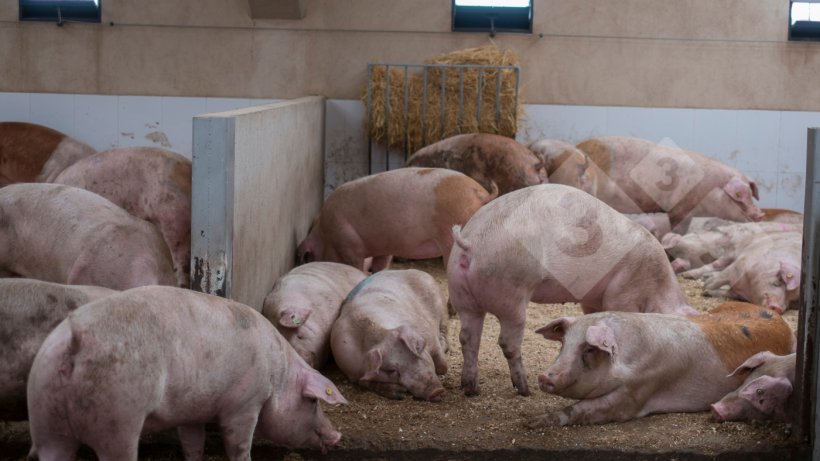Gilts can be the best reproductive performers on the farm regarding conception and farrowing rates. To achieve this, everything needs to be going right in our gilt populations, including health, physical development, and reproductive preparation.
Gilt housing and management

The ideal situation would be to bring the animals at three weeks of age into an isolation facility where animals stay for a minimum of four weeks, but it is most common to find producers working with isolations holding two groups of gilts, so they stay for about eight weeks. After that, they will go to a gilt developer unit that, on many farms, is just a finishing barn with different pen sizes and feeders. The animals move through the unit as younger gilts are coming in. At 21 weeks of age gilts go through selection. Animals that do not meet the criteria are culled and the selected gilts move forward to boar exposure.
Identification: It is recommended that weaner gilts receive a tag that indicates their birth week, so their age is easily known throughout their life as age is a critical element for gilt flow, and to make decisions on the future of every gilt. Age tags also help make sure that monitoring samples are taken on the right age groups. Pure line animals will receive an individual identification to trace their pedigree and all gilts that are selected as future breeding stock will receive an individual tag upon selection.
Space: Gilts are a little bit like goldfish and they grow according to the available space. Space allowance considering the size of the animals is a key factor, also considering drinker and feeder space.

Flooring: Some producers place the young weaner gilts on plastic flooring at isolation facilities and this can cause some problems. Gilts can have a tough transition moving from plastic flooring to concrete slats when they are moved from isolation to the gilt developer, a critical stage when animals are already under the challenge exposure, therefore we really do not want the animals to have any additional challenge. Also, plastic flooring in the isolation units can limit your ability of introducing older animals, which can be an interesting option under some circumstances.
We need to be vigilant regarding hoof health as it can destroy your gilt retention rate.
Ventilation has basically the same goals as for commercial growing pig. Minimum ventilation needs to ensure that humidity and gases are removed. When we talk about gilt development, a problem with ventilation that generates an excess of ammonia can have a negative effect on the smell receptors of the gilts, affecting their response during boar exposure. If the capacity of the gilts to smell the pheromones gets affected, it can impact their ability to display the signs of estrus and as a result, there will be a negative effect on our ability to detect heat.
Gilt training: if there is technology such as ESF on the farm, it is important that we try to teach the gilts when they are young and more curious animals so it is basic that there are ESF training stations or any other devices such as gates, drinkers, or technology that will be used later in life at the gilt development unit so that animals interact with them and learn how to use them while they are young. Training older animals is more challenging as they can be quite reluctant to go through ESFs. If animals are not trained until they are older, it can have the effect of lowering their feed intake and gilts will be losing weight at a critical time just before their first mating, affecting their reproductive performance. Pushing those reluctant animals is a labor intensive, two-person job. ESF training for gilts can be difficult but is very much worth it. Gilts need to be valued and the right resources applied to them.
It takes commitment to ensure that your facility is designed and equipped to help you train the gilts
How do we know we are doing a good job at preparing our gilts?
We must look at gilt data to know if we are on the right track.
Productive data:
- mortality levels during gilt development
- growth rate: future breeding gilts must have a growth rate that allows them to reach the right weight at the right time to be bred. Our benchmark is an ADG of 675 g/day (1.5 pounds /day) from weaning to selection (at 20 weeks of age approx.)
Reproductive data:
- % of gilts that come into heat by 30 weeks of age: This age needs to be adjusted considering the genetics. If we see a value of 90%, we can be quite happy that there is nothing dragging those gilts and preventing them from having a good reproductive life. This target may seem high, but it is achievable and the best farms see 95%.
- Weekly numbers of gilts bred: We want to have a consistent number of gilts being mated. Our target is to have 1% of the total inventory as number of gilts bred on a weekly basis. For a 5000-sow farm this will mean 50 gilts bred on a weekly basis.
- Conception rate of the gilts: We expect gilts to have the best conception rate of any parity in the herd and this is really important as we are going to bred more gilts as a percentage that any other parity. Gilts should be very fertile animals. In farms without a disease challenge, we should expect a conception rate of 93-94% in those gilts.
We can sometimes observe some seasonality in this parameter, but many times it is driven by our own decisions. Sometimes during summer and early fall, when we have an issue with females showing signs of estrus and we expect a lower conception rate in all parities, the farm may breed some sub-optimal gilts, such as returns, abortions, etc. that would not otherwise be bred in another time of the year, just to make sure that the weekly target of matings is met during those difficult months. In those situations, we must look at the conception rate of maiden gilts, gilts in their first mating. If there is a reduced conception in the gilts due to mating of suboptimal females, the issue comes from management decisions.
To achieve these targets, everything needs to be going right in the gilt population including health and reproductive preparation such as daily consistent boar exposure at the right age and proper heat detection.
















